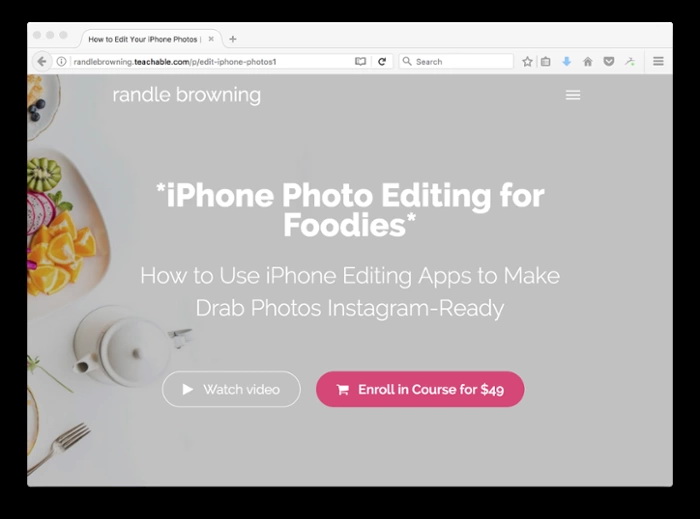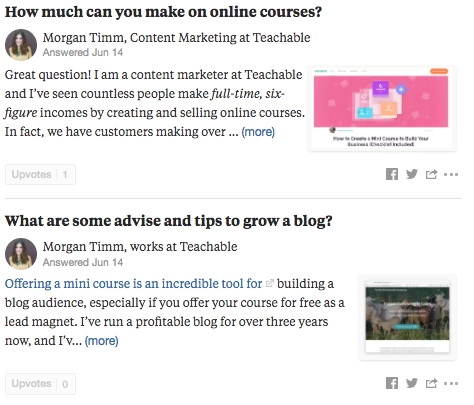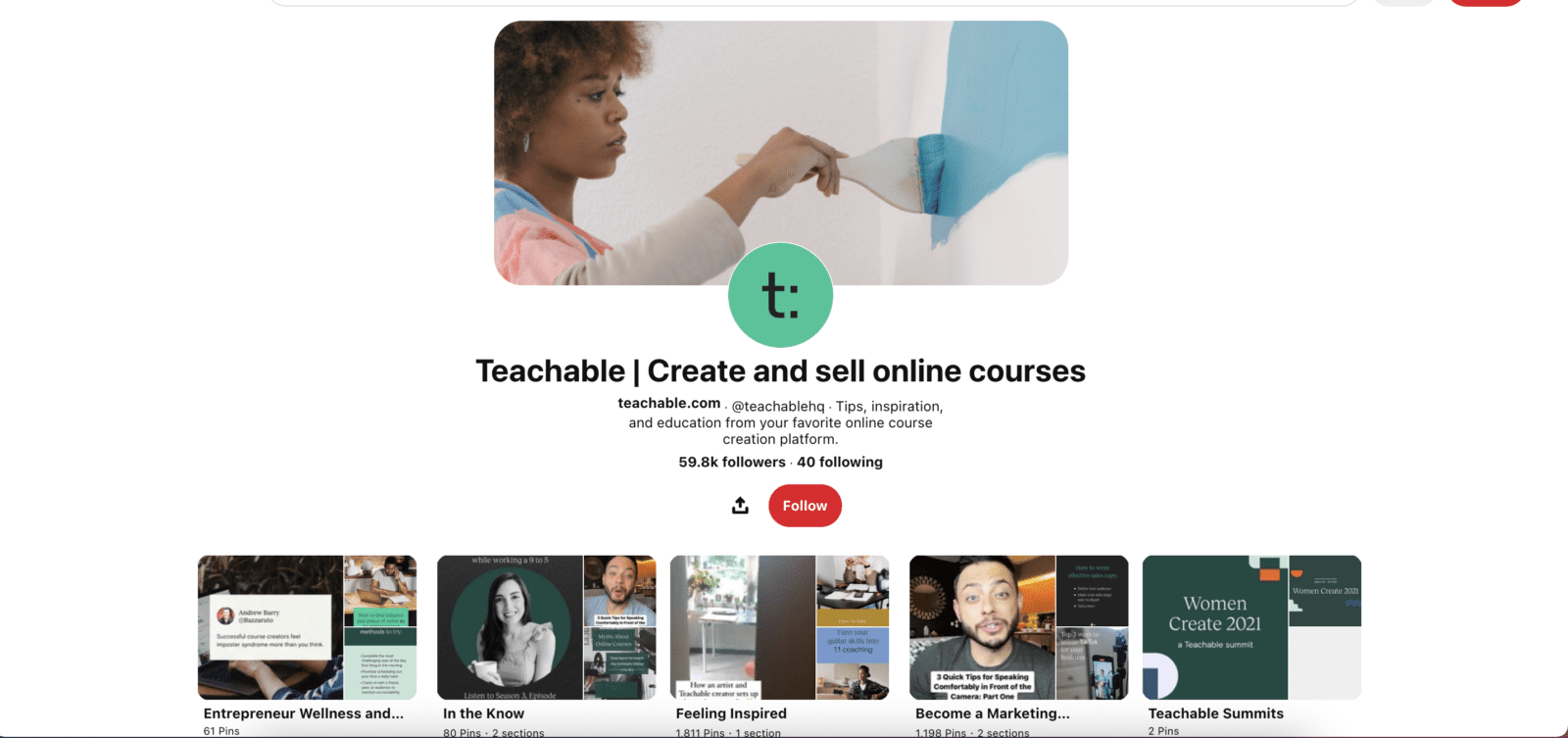How to take your offline business online


With more and more consumers turning to the Internet to shop—for everything from books and movies to groceries and therapists—it makes sense that so many entrepreneurs are looking for a way to take an offline business online.
If you run a business that involves communicating, in-person, you might be looking to the future and wondering how your work will evolve. If you dread the turn to digital, don’t worry. You don’t necessarily have to abandon your brick-and-mortar, but adding an online component to your business—like an online shop, course, or coaching program—could totally change your future.
In this post, we’re going to cover:
-
Why you should make a plan to get your offline business
-
How to translate an offline business to the online world
-
How to market your online business and earn more money
Why take your offline business online
There are plenty of reasons to make the jump to online entrepreneurship, and your online business model will depend on your goals as a business owner.
If you want to free up extra time…
Consider setting up passive income streams online. If you meet with clients one-on-one in your offline business, there is a limit to how much you can earn. Since you’re selling your time, you’re limited by how much time you have.
Creating an online course or would accomplish two things:
-
An unlimited amount of students could enroll
-
Students who don’t live close enough for in-person coaching can benefit from what you have to teach
-
You can make more money without doing more work
Since students can take online courses on your own time, it means you’re not limited by your own availability, energy, or geographic location.
Offering weekly or monthly group coaching calls also accomplishes the above. If you don’t want to miss out on that personal connection of actually talking to people, group coaching is an elegant solution. You get to help more people in less time and do it online, where most people can meet you without traveling.
Taking your business online allows you to scale up without burning out.
If you want to increase your income…
Juggling both an in-person and online business can seem like it’d be more trouble than it’s worth, especially if you’re already overwhelmed as it is, or if you’re already making pretty good money with your in-person business.
But an online business isn’t limited by your time and availability, and has much more potential for growth, especially if you’re a team of one.
In the groove
When you set up the right workflows and systems, the online portion of your business can be largely automated. For example, you might have your site set up to tell newcomers about your course.
No matter what you’re selling online—courses, downloadables, templates, or anything in between—you can use automation to make the promotion run behind the scenes without having to think twice about it. Automating your online business is easier than you might think. And the time spent setting up your automation will be well worth it down the road.
If you want to reach people all over the world…
No matter how great your offline business is, the audience has to be there. If your audience isn’t in your geographic area, it makes sense to turn to the Internet, where you can find people with any interest imaginable.
Or maybe you do have a local audience, and realizing the demand for your service just within your own zip code has opened your eyes to how great your offer really is. Bringing your business online can mean expanding your offer to anyone who needs it, no matter where they’re located.
If you want to build a reputation as an expert…
Another perk of building a following online? Free press. Once you begin to become known, other people become curious.
Chances are, your in-person business relies to some extent on word-of-mouth. Someone tells a friend about what you do, and your business grows. But that can only take you so far. Online, word-of-mouth marketing can take your growth to a global scale.
If you want to sell to clients who can’t afford your rates…
If you sell a premium priced item, a portion of your audience wants to work with you or buy from you, but they simply can’t afford it. That’s where selling an online product comes in.
You can sell an online course if there are too many clients for you to possibly take on. An alternative, though, is to create an entry-level course for people who can’t yet afford your premium services. This means more passive income for you and more happy clients. It’s a win-win.
If you want to monetize what you don’t want to do anymore…
You may have a skill that people naturally come to you looking for advice. But perhaps it’s not your passion. Instead of giving them your rates and getting started on a project you’re not passionate about, you can teach them how to market themselves.
Package all of your marketing knowledge into one online course and whenever anyone reaches out asking for your expertise, refer them to your product.
Action point: Define what it is you actually want to accomplish with your online business. Don’t just keep it in your head. Write it down, it’ll be coming to play further along this post.
How will your online business fit with your existing business?
You’re ready to take your offline business online. Now, harmoniously marrying your offline and online businesses requires a bit of planning and preparation. So, ask yourself these questions before you take the plunge:
You have a few options here:
-
Go completely online
-
Run the two businesses together indefinitely
-
Slowly transition from primarily focusing on your offline business to focusing on your online business
Tip: If you decide to take your business online, consider working on upselling your online services to your existing offline customer base. This way, you won’t leave your current customers high and dry. Plus, they’ll likely be excited for you and your new venture.
Action point: Decide your goal with bringing your business online. Do you want it to completely take over and phase your offline business out? Or will the two run in conjunction with each other?
Assess your current online presence
We have a little assignment for you: Make a list detailing every single asset you already have that you can use for your online business. Here are a few examples:
-
A website for your business
-
Social media sites
-
Facebook
-
Instagram
-
Twitter
-
Pinterest
-
A mailing list
Whether your list is a mile long or non-existent, you’re still in a good place to get started. If you already have a ton of valuable assets, you have a bit of a head start. If your online presence is minuscule at best: good news! You get a fresh start, which is always exciting.
Action point: Take inventory of your online business assets.
Identify your target customer
Knowing who exactly you’re hoping to sell to will make finding them online infinitely easier. And lucky for you, if you already have a customer base with your offline business, you likely have a good idea of who your target persona might be.
Essentially, target personas take the characteristics of everyone who might be interested in your online business and creates one “avatar,” or made up person, that you keep in mind when working on different parts of your online business.
If you don’t have a distinct customer base, the best way to identify it is to talk to real customers. Ask customers to chat with you for 20–30 minutes. Ask them what their primary goals and obstacles are, and how they use your business. Once you start to see similarities you’re ready. Use what you learn to create a target person that represents your audience.
Once you’ve established your clients’ needs and habits, it’s easier to get in their head and (1) solve any problems they may be having, and (2) figure out how to best serve them. Learn everything you need to know about audience personas in this article.
Start building your online audience
Now that you’re ready to take your business online, you need to start establishing an audience of potential customers.
If your audience says they’re not checking their emails or that marketing messages go straight to spam, you might be better on social media. On the other hand, if your audience doesn’t hang out on social media, opt to focus on your email list. In the long run you’ll want to have both an email list and social media following, but for now just focus on one.
When you build your online business around your audience, you’re playing a volume game. You can expect a certain percentage of people on your list to sign up for your product. So to grow your business, you need to grow a healthy list of people interested in your product.
There IS another option for taking your business online—you can build an online business around fewer customers and much higher prices points. This method works the best for consultants and experts who charge a very high price for their specialized advice and services in a small niche.
Here’s how it works: you take a service you offer and completely translate it to a very high-value, high-priced online course. If you’re a successful podcast strategist, for example, you translate your program into an online course. When clients come to you, you can offer them your course. You can also sell to institutions who have no trouble buying a license to your course with a high price tag. For our example, a podcast company or content agency might be interested.
A real Teachable instructor, Leslie Zaikis, is a marketing expert who worked with new authors to promote their books. She had way more demand than she could meet, so she created a course on book marketing to offer to prospective clients. Leslie doesn’t need to build a list or promote her course, and she doesn’t need hundreds of students. She offers her course to a handful of clients at a high rate (since it’s so valuable, and her method is proven to work).
Now, that “less is more” model is a very specific use case. If you’re not a consultant selling your services at a high price and in a niche market, it’s best to go the tried and true traditional route—build your email list!
Building your email list
The key to building your email list is to provide value for free. This value can come in the form of a free download, a mini course, an e-book, or any other resource relevant to your online business.


To start collecting email addresses, gate your free resource (aka hide it behind a sign up page that requires an email address) and drive traffic to your page. There are dozens of ways to increase website traffic and build a list, but one method is by using forums like Quora. On Quora, people ask questions of all types.


But you need to use Quora strategically. (You can learn how to use Quora effectively here.) Once you’ve driven traffic and people have signed up for your free resource, you can now start marketing to them directly via email.
Of course, using a lead magnet and Quora aren’t the only ways to build your email list (the options are infinite) but those are some creator favorites. Here’s a more complete guide to growing your email list.
Building your social media following
As you take your offline business online, don’t try to be everything for everyone. Choose one or two social media platforms to start with, and throw all of your energy into them. The worst thing you can do is spread yourself too thin and have a mediocre following across half a dozen different sites.
If you have already identified your user personas, you might have a good idea of what social media site is right for you to focus on. If not, you may have to dig a little deeper.
The good news is that you and your audience probably have a lot in common. The social media site you personally feel most partial to will likely be a good place to start.
Keep these things in mind:
-
Be helpful and engaging for your target audience—not necessarily your friends. If your niche is baking, your audience likely won’t be overly interested in your live tweeting the latest Riverdale episode.
-
Actually connect. When you’re using social media, be social. Make sure to follow others in your niche, engage with their content, and support them as much as you can. They’ll be much more likely to return the favor.
-
Use branding. Use a consistent color palette throughout your social headers and avatars to strengthen your brand. Keep your copy and messaging consistent with the brand and voice you want to portray.


Taking an offline business to online: Solving problems
This is the fun part. You get to look to the business you already have and decide how you can take your business online. Keep building up your audience while you work on this step.
Identify patterns and systems
To get started, identify elements of this service or product that are repetitive or algorithmic and can be converted into an online course. When you’re coaching, do you constantly go over the same pain points with client after client? Create an online course addressing that one specific pain point.
Do you find that under qualified clients make queries wanting to work with you, but they’re still stuck in the “beginner” stage while you prefer to work with intermediates? You can create a beginner course that primes your students to work with you in a more advanced way in the future.
Go online first:
-
Online courses are a product you can create once and sell over and over again turning them into passive income
-
You can charge more for online courses than you can products like an ebook
-
Online courses allow you to reach an infinite number of people unlike a monetization method like coaching.
An example of someone who has successfully added an online course component to his business is Robert McKee. He is a celebrated author of the definitive screenwriting books Story, Genre, and Dialogue.
His seminars on the same topics are in high-demand, but he wanted to expand his reach with an online course. He created Dialogue: The Art of Verbal Action for Page, Stage, and Screen to reach students who can’t make it to his in-person workshops, and he promotes his course online and live at speaking events.


Define your course topic
Once you’ve decided to take your offline business online, you need to figure out what exactly your online course is going to be about.
Of course, given that you’re already an entrepreneur you should have a niche in mind. You already know what you’re an expert in, and you know who your audience is. Now you just have to figure out what valuable information you can offer your customers through an online course. The best way to do that is to identify the transformation customers will experience.
The case for online
People take online courses for one reason: They want to make progress in a certain area. They have the before and they want the after. Your course should take them from point A to point B and at the end they should see a tangible difference in what they know or their abilities. And your course should speed up the transformation, so that they learn what they need with less time and hassle than they would on their own.
No matter your niche, instead of deciding to teach the ultimate guide on any given area, you’re better off creating a specific course walking your students through just one or two specific transformations.
Creating your course content
If you’re ready to take your offline business online with a course, review these popular posts to see how to:
Now all that’s left to do is launch! There are so many ways to launch an online course. However, our favorite is championing your email list (on average it converts at 2%!) and creating supplementary promotion on your other online assets.
Decide how to sell your course
Once you’ve decided upon your course topic, identified your audience, and created your course content, it’s time to decide how to sell. There are two main models for selling your course: open-close launches and evergreen sales.
1. Evergreen course sales
Having an evergreen sales system means that you’ll launch your course once, and then it’ll be available from that moment on. We most often see this type of launch with course instructors who have an entire school full of multiple courses for their students to choose from.
With that said, there are plenty of instructors who only have a course or two and keep it evergreen indefinitely.
2. Open-close course launches
We see a lot of open-close launches here at Teachable and for good reason. If done right, the open-close model is very profitable and is what a lot of our most successful instructors do. The idea of an open-close launch is that you’ll create the course once, and then host huge launch campaigns several times throughout the year. When you’re not launching, your course is closed, and no one can sign up until enrollment opens again.
These types of launches help create urgency and excitement. Making your course available for only weeks out of the year can give people a “now or never” mindset that pushes them to take the plunge and purchase. It also makes for a better, higher-energy experience when students enroll in a course at the same time.


How you launch your course is entirely up to you. But at the end of the day taking an offline business online can be lucrative. It can help you reach a new audience geographically, diversify your product offerings, and more more money with less effort.
Still wondering about online courses? Watch this video to further understand why you should take an offline business online through courses.